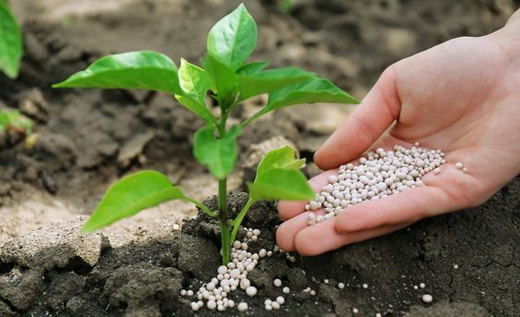 Even inexperienced gardeners know that to get a high yield of pepper it is important to provide it with good nutrition. Balanced fertilizing is needed for plants at all stages of the growing season, while not the amount of fertilizers plays a role, but their proper selection.
Even inexperienced gardeners know that to get a high yield of pepper it is important to provide it with good nutrition. Balanced fertilizing is needed for plants at all stages of the growing season, while not the amount of fertilizers plays a role, but their proper selection.
In the article we will talk about what types of dressings are needed and used for peppers, at what time to apply fertilizers, as well as about folk remedies.
Content
Types of Feeding
In the difficult Russian climate, peppers are grown through seedlings, then planted in greenhouses, greenhouses, less often - on ridges. Diving, transplanting - all these are stresses for plants, and in order for the plants to be healthy and not stretched, it is necessary to create the most comfortable conditions for them.
According to the method of feeding, they are divided into two types:
- root
- foliar.
In the first case, nutrients are “delivered” to the plant through the root system when watering under the root. The method is the most famous and widespread, used everywhere. Foliar top dressing is spraying, which is carried out on leaves of peppers.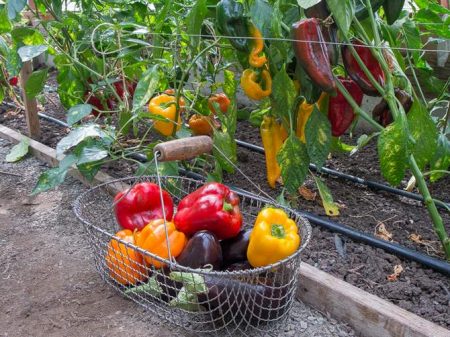
Also, top dressing is divided into organic and mineral additives in composition. A separate group consists of compositions that are prepared according to various folk recipes and not without success are used by gardeners from various regions.
Organics
Peppers love organics, but their best results are obtained by using it as a base to which mineral fertilizers are added. Commonly used:
- mullein (diluted with water 1:10 and insist);
- bird droppings (1:15 or 1:20 to be bred);
- infusions of nettles and other weeds;
- compost;
- peat.
Plants need nitrogen in the initial stages or if it is required to activate the development and growth of peppers. At other stages of the growing season, its amount is reduced by adding phosphorus and potassium.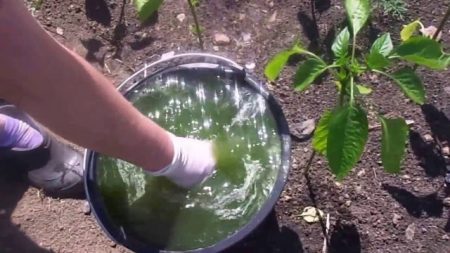
Mineral fertilizers
Mineral additives (fat) are widely used for top dressing peppers, both simple (superphosphate) and complex (ammophos). It is recommended to use combined additives based on recycled organics and enriched with mineral components. Among them are such tuks as nitrofoska, nitroammofoska.
Pre-mixed fertilizers of Kemira, Kemira-Lux, Kristallon, Agricola, Ideal, Uniflor are popular. Many of these complexes are represented by series, which include fertilizers with different composition. This allows gardeners to select the right fat with the necessary set of components for the various phases of pepper vegetation. For example, for the initial period, you can choose nitrogen-containing complexes, but for feeding in the flowering stage, fruiting, complexes with a predominance of potassium and phosphorus will be needed.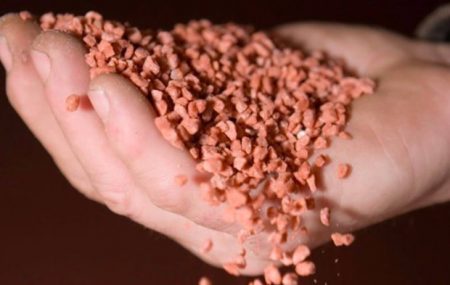
It must be remembered that top dressing is important for peppers, but in all cases - using organics, minerals, using folk remedies, you must follow the rules and instructions. Only in this case it will be possible to get a good harvest and environmentally friendly fruits.
Pepper feeding schedule
Feeding this culture begins in the seedling period. Much depends on the experience of the gardener, as well as the conditions in which peppers grow at home.So, some summer residents who grow seedlings with the use of picking, believe that peppers do not need top dressing until this time. Others grow peppers without diving, but they fertilize, so here everyone decides for himself. You need to focus on your own experience, the condition of plants.
An approximate fertilizer schedule for peppers will be as follows:
- Plant nutrition 14-16 days after germination. Use fertilizers with nitrogen and phosphorus. For this, solutions of Kemira-Lux, Crystal are suitable. You can also use superphosphate with urea (30 and 6 grams per bucket of water) or superphosphate with ammonium nitrate (30 and 12 grams).
- The second root dressing before the pick, if the peppers grow well, you can not do it. Instead, it is recommended to spray the seedlings with Zircon or Epin (the composition is done strictly according to the instructions). This technique will help strengthen the immunity of peppers before transplanting.
- After a dive, pause, as the plants must recover, survive the stress. Fertilizers are applied approximately 14 days after the dive, using mixtures using all three necessary components: nitrogen, potassium and phosphorus. In this case, nitrogen is taken in two or even one part, and potassium and phosphorus - in three. Options:
- superphosphate, ammonium nitrate and potassium sulfate;
- all the same superphosphate, but mixed with urea and potassium salt.
- For foliar feeding seedlings during this period, ready-made formulations of Ideal, Aquadon-micro are used (bred according to the instructions).
- The next top dressing is carried out after the peppers are planted in a greenhouse or greenhouse. They wait about two weeks (just at this time you can make an infusion of mullein or bird droppings) and feed the peppers with organics. Herbal infusions, as well as mixtures of mineral fertilizers, are also suitable. Each pepper should receive 1-1.5 liters of solution.
- During flowering, peppers need all the components, so they make mixtures of urea, superphosphate and potassium nitrate (a spoon on a bucket of water) and fertilize the plants.
- But when the fruits begin to form on the plants, nitrogen is excluded and they are fed with phosphorus and potassium. You can take superphosphate, potassium salt (on a tablespoon in a bucket of water).
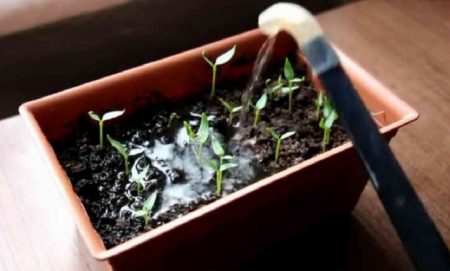
All top dressing should be carried out not on dry soil, but combining with watering plants. Spraying is carried out either in the early hours, or already after 17 o’clock in the evening, otherwise plants from direct sunlight can get burns. For better assimilation of all components, it is necessary to moisten not only the upper, but also the reverse side of the sheet plates.
Gardeners often underestimate foliar top dressing, but in fact, thanks to correctly selected formulations, you can increase the number of ovaries on peppers and accelerate the ripening of fruits. Also, these top dressings have a good effect on pepper growth, timely thickening of plant stems, and their better adaptation during transplantation.
Next, we will consider various types of top dressing for peppers (organics, minerals, folk remedies), as well as possible indications for their use, timing.
The method of preparation and use of ash solution
One of the most popular fertilizers for peppers (and many other garden crops) is wood ash. It contains not only potassium and calcium, but also many other substances that are useful for plants. Wood ash contains about 100 different elements and microelements, while it contributes to the deoxidation of the soil, and also protects peppers from infections and a number of pests.
Ash is used in dry form (introduced into the wells before planting, dusting the soil) and also infusions are prepared from it for all types of top dressing. About 203 kg of ash are taken on a bucket, poured with warm water and insisted for two days. Then the solution must be filtered, the precipitate removed. When spraying, it is recommended to add shavings of laundry soap for better adhesion of the composition.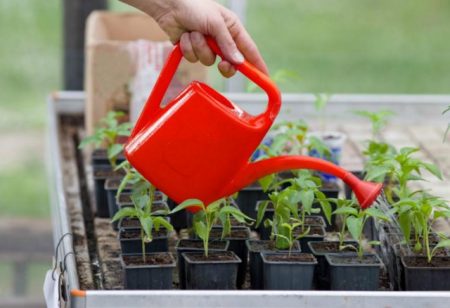
When root dressing, ash can not be applied simultaneously with organics, for example, mullein + ash (it is recommended to alternate fertilizers).
Yeast
Culinary yeast is actively used in the cultivation of pepper, both to accelerate the growth and increase yield of plants, and to improve the structure of the soil. For peppers, two top dressings per season are enough, while products with an expired shelf life cannot be used.
Recipes for the preparation of compounds are simple:
- About 200 grams of yeast is diluted in warm water, a little sugar is added and left for two to three hours. Then everyone is bred in a bucket of warm water and watered peppers.
- Yeast, sugar and ascorbic acid are diluted in 5 liters of water. It will take two tablespoons of sugar, half the yeast and only 2 grams of ascorbic acid. A handful of soil is also added to this mixture. All is left for 24-30 hours, for feeding, the mixture is diluted with water, per liter of infusion per bucket of water.
Such dressing is recommended for peppers about two weeks after planting them in greenhouses or hotbeds.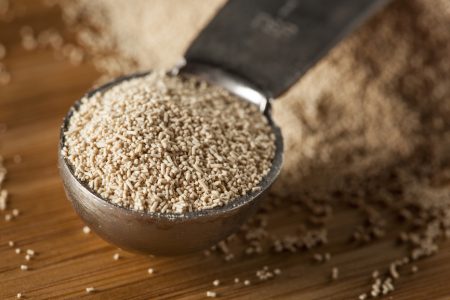
Green infusions
Such fertilizers can be used for peppers once every two weeks, and you can be sure that the plants will thank you with an excellent crop. Nettle is often used for such green “tea”, although other herbs are also suitable - plantain, wood louse, plantain, dandelion, wormwood.
The grass is ground, placed in a tank or barrel, poured to the top with water, hermetically sealed and left to infuse for 6-7 days. When feeding, the infusion is bred: a liter of composition in a bucket of water. Green “mash” has a very specific smell, so it is best to keep the barrel of infusion away and close it tightly.
Green infusion is used for root dressing, it is also suitable for spraying peppers.
Egg shell and onion peel
At a time when peppers grow at home, you can feed the plant with infusions for which they take onion husks or egg shells. Thrifty gardeners should not lose any useful waste, because very many of them can become the basis for excellent fertilizers.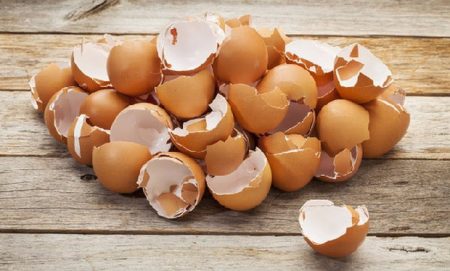
It is not difficult to make onion “happiness” for peppers, moreover, seedlings will not require much husk. It is enough to take about 10-15 grams of onion “clothes”, pour it with warm water (2-3 liters) and insist 5 days. Then use the composition for watering the pepper. In the same way, the shell infusion is also prepared, using it separately for top dressing, and replacing it with watering.
Banana peel dressings
In order for the pepper fruits to be fleshy, sweet, large, it is necessary to provide the plant with potassium. This element is necessary for the culture at any time, but especially during fruiting.
In addition to mineral fertilizers, you can use infusions of banana peels. This fruit contains a large amount of potassium, and therefore banana infusions can also be used for dressing.
Of course, the pulp is too wasteful to use (you will eat it yourself), but the peel, which also has a lot of potassium, must be stored, dried, and then infused and watered with seedlings. Banana peels are an excellent substitute for mineral potash fertilizers.
Foliar top dressing with iodine, potassium permanganate, ammonia
To increase the yield of peppers, as well as protect plants from brown spotting, spraying with a solution of potassium permanganate is used. It is enough to dilute 2 grams of permanganate in a bucket and spray peppers on leaves.
With a lack of nitrogen, foliar top dressing with ammonia will help to quickly replenish the amount of this element. The drug is diluted in water, peppers are sprayed.
Iodine spraying also improves the setting of peppers, protect against pests. Take 10 grams of iodine tincture in a bucket of water. The real energy for peppers will be a potato broth with which you can water the plants.
How to use mineral fertilizers
It has already been indicated above which mineral fertilizers can be used for feeding peppers. It is important not only to comply with the application rate, but also to properly prepare the formulations.
So, urea containing nitrogen is introduced both as a root solution (60 grams are diluted per bucket) and as foliar top dressing (100 grams per bucket of water). It can also be used in dry form until seedlings are planted (no more than 10 grams per square meter are applied to the soil).
It is very effective to feed the peppers with a nitroammophos, for which a matchbox of fertilizer is bred in a bucket and water the plants with a solution in the flowering phase. It is advisable to breed superphosphate in hot water, proportions for peppers: a tablespoon per liter of water.
Ready-made complex formulations are used strictly in accordance with the instructions. Typically, manufacturers always indicate the proportions, time of application, as well as the method of use of the fertilizer.
For example, the popular fertilizer Ideal, created on the basis of vermicompost, is used both for root dressing and for spraying (before flowering peppers).
Kemira-Lux fertilizer contains potassium and phosphorus (more than 20%) as well as nitrogen (about 16%), it also contains trace elements useful for peppers. For watering, you need to dilute 20 grams of powder in a bucket of water.
To improve the condition of peppers, good plant growth, increase productivity, such compositions as Fortified, Mortar are also suitable. But to protect plants from stress, increase immunity, Epin is used.
The right approach in choosing fertilizers for peppers, observing the application standards of all components will allow you to get good yields even under adverse conditions, while avoiding crop diseases.




 Calorie pepper stuffed with meat and rice - BZHU per 100 grams
Calorie pepper stuffed with meat and rice - BZHU per 100 grams Gorky pepper - the best varieties for open ground
Gorky pepper - the best varieties for open ground Hot pepper seeds - the best varieties for open ground and reviews
Hot pepper seeds - the best varieties for open ground and reviews Capsicum tincture for hair - how to use and reviews
Capsicum tincture for hair - how to use and reviews